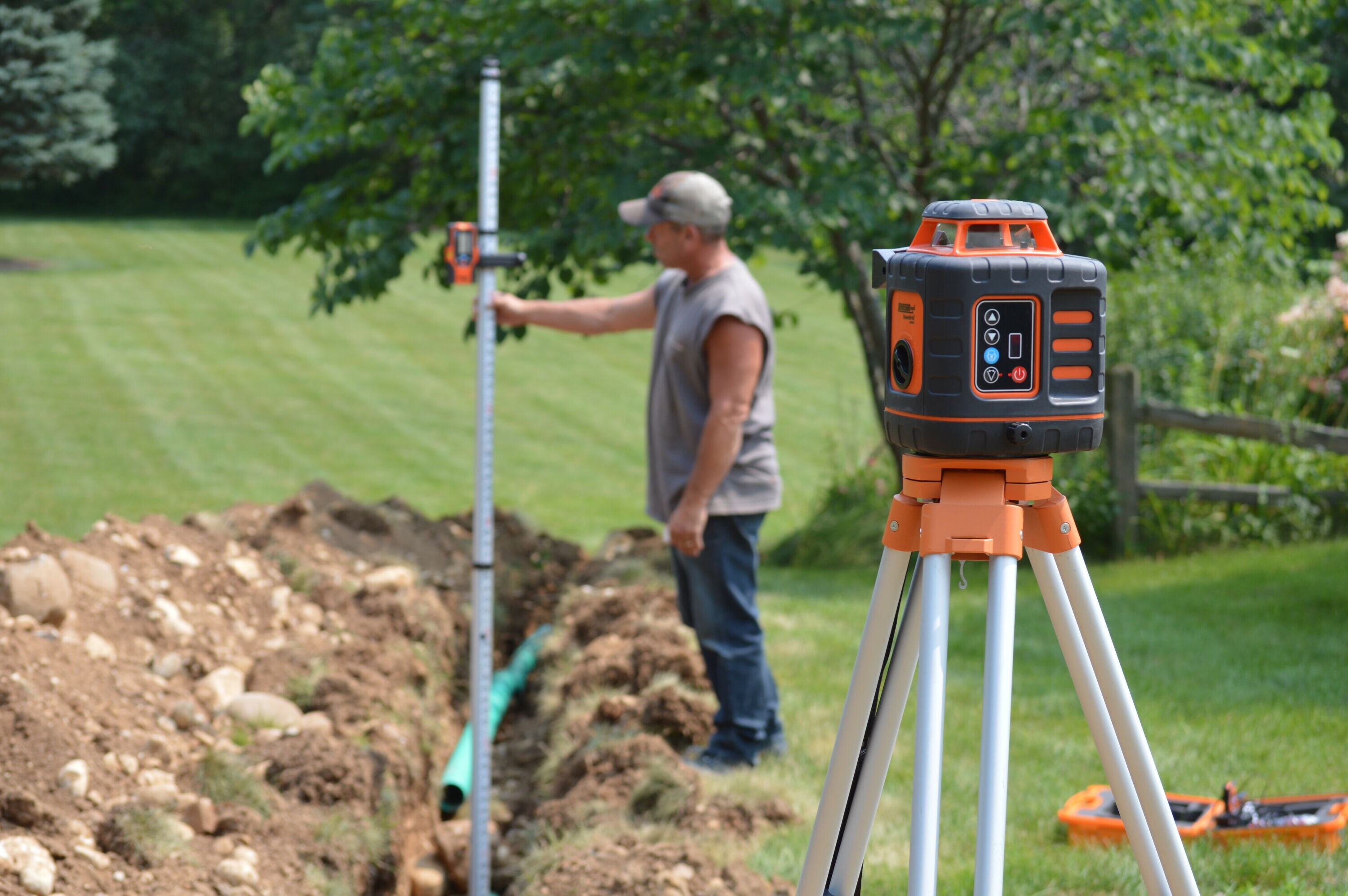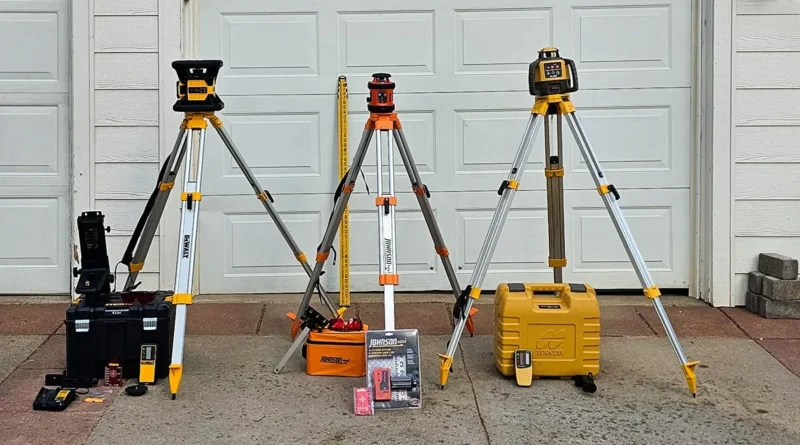The Ultimate Guide to Rotary Laser Level: Uses, Benefits, and Buying Tips
Introduction to Rotary Laser Level
A rotary laser level is an essential tool for professionals and DIY enthusiasts alike, providing precision in leveling and alignment tasks. Whether you’re involved in construction, carpentry, landscaping, or home improvement, a rotary laser level ensures accuracy and efficiency in your projects. This guide explores the key features, applications, benefits, and factors to consider when purchasing a rotary laser level.
What is a Rotary Laser Level?
A rotary laser level is an advanced leveling tool that emits a 360-degree laser beam, creating a reference line over a large area. Unlike traditional spirit levels, a rotary laser level provides continuous and precise leveling, making it ideal for indoor and outdoor projects.

How It Works
A rotary laser level consists of a laser diode that emits a beam, which rotates rapidly to create a visible or invisible horizontal or vertical plane. It is mounted on a tripod and can be adjusted for various angles and slopes, making it highly versatile.
Common Applications of a Rotary Laser Level
The rotary laser level is widely used across different industries and projects, including:
1. Construction and Surveying
- Ensuring accurate alignment of walls, floors, and ceilings.
- Setting up foundation levels.
- Verifying heights and slopes for excavation.
2. Carpentry and Interior Design
- Installing cabinets, shelves, and countertops.
- Aligning tiles and flooring.
- Creating level reference points for decorations.
3. Landscaping and Outdoor Projects
- Grading and leveling terrain.
- Installing fences and retaining walls.
- Setting up drainage systems.
4. Roadwork and Infrastructure Development
- Determining elevation levels for road construction.
- Aligning pipes and sewage systems.
Key Benefits of Using a Rotary Laser Level
Investing in a rotary laser level comes with multiple advantages, including:
1. Enhanced Accuracy and Precision
A rotary laser level provides superior accuracy, reducing human errors and ensuring straight and level lines for your project.
2. Increased Efficiency and Productivity
With automatic leveling features, these tools help professionals save time and complete projects faster with minimal manual adjustments.
3. Versatility for Multiple Applications
Whether working indoors or outdoors, a rotary laser level adapts to different environments and surfaces, making it suitable for various tasks.
4. Long-Distance Coverage
Unlike standard levels, a rotary laser level covers large distances, making it perfect for commercial and industrial projects.
5. Ease of Use
Most modern rotary laser levels come with self-leveling capabilities, remote control operation, and intuitive interfaces, making them user-friendly even for beginners.
Choosing the Best Rotary Laser Level: What to Consider
Before purchasing a rotary laser level, consider the following factors to find the best model for your needs:
1. Accuracy and Range
Look for a model with high precision (within 1/8 inch at 100 feet) and an extended range to ensure optimal performance.
2. Leveling Type (Manual vs. Self-Leveling)
- Manual rotary laser levels require manual adjustments and are more affordable.
- Self-leveling rotary laser levels automatically adjust to provide a perfectly level line, ideal for professionals.
3. Visibility (Green vs. Red Laser)
- Green laser beams are more visible in bright outdoor settings.
- Red laser beams are suitable for indoor use and consume less power.
4. Durability and Weather Resistance
For outdoor applications, choose a rotary laser level with a weather-resistant and durable design to withstand tough conditions.
5. Battery Life and Power Source
Consider whether the device uses rechargeable or replaceable batteries and ensure it provides long-lasting performance for extended projects.
6. Additional Features
Some rotary laser levels include features like remote control operation, dual slope functionality, and a tripod or detector for enhanced usability.
How to Use a Rotary Laser Level Effectively
To maximize efficiency and accuracy, follow these steps when using a rotary laser level:
Step 1: Set Up the Tripod
Securely place the laser level on a tripod and ensure it is stable on the ground.
Step 2: Power On and Level the Device
Turn on the rotary laser level and allow it to self-level or manually adjust it using the built-in bubble vials.
Step 3: Adjust the Beam Direction
Position the laser beam towards the target area and use a laser detector if working outdoors in bright conditions.
Step 4: Mark Reference Points
Use the laser line as a guide to mark level points on walls, floors, or the ground for your project.
Step 5: Complete Your Task
Once the alignment is verified, proceed with installation, grading, or construction based on the laser guidelines.

Top Brands Offering High-Quality Rotary Laser Levels
Several reputable brands manufacture reliable rotary laser levels with advanced features. Some of the top brands include:
- Bosch – Known for durable and high-precision laser levels.
- DeWalt – Offers rugged, job-site-ready rotary laser levels.
- Topcon – Preferred by professionals for its accuracy and long-range performance.
- Spectra Precision – Provides reliable laser levels for construction and surveying.
- Johnson Level & Tool – Produces budget-friendly and effective leveling tools.
Conclusion
A rotary laser level is an indispensable tool for professionals and DIYers who require precise leveling and alignment in their projects. Whether you’re working on construction, carpentry, landscaping, or roadwork, choosing the right rotary laser level enhances efficiency and accuracy. By considering factors like accuracy, range, visibility, durability, and additional features, you can invest in the best tool for your needs. With proper use and maintenance, a rotary laser level will serve as a long-lasting and valuable addition to your toolkit.
you may also like
